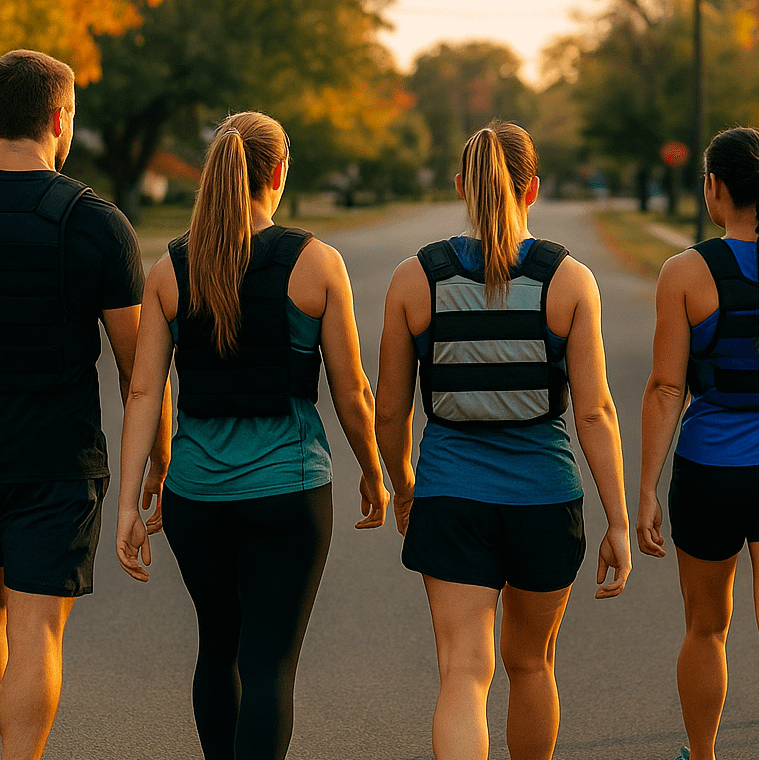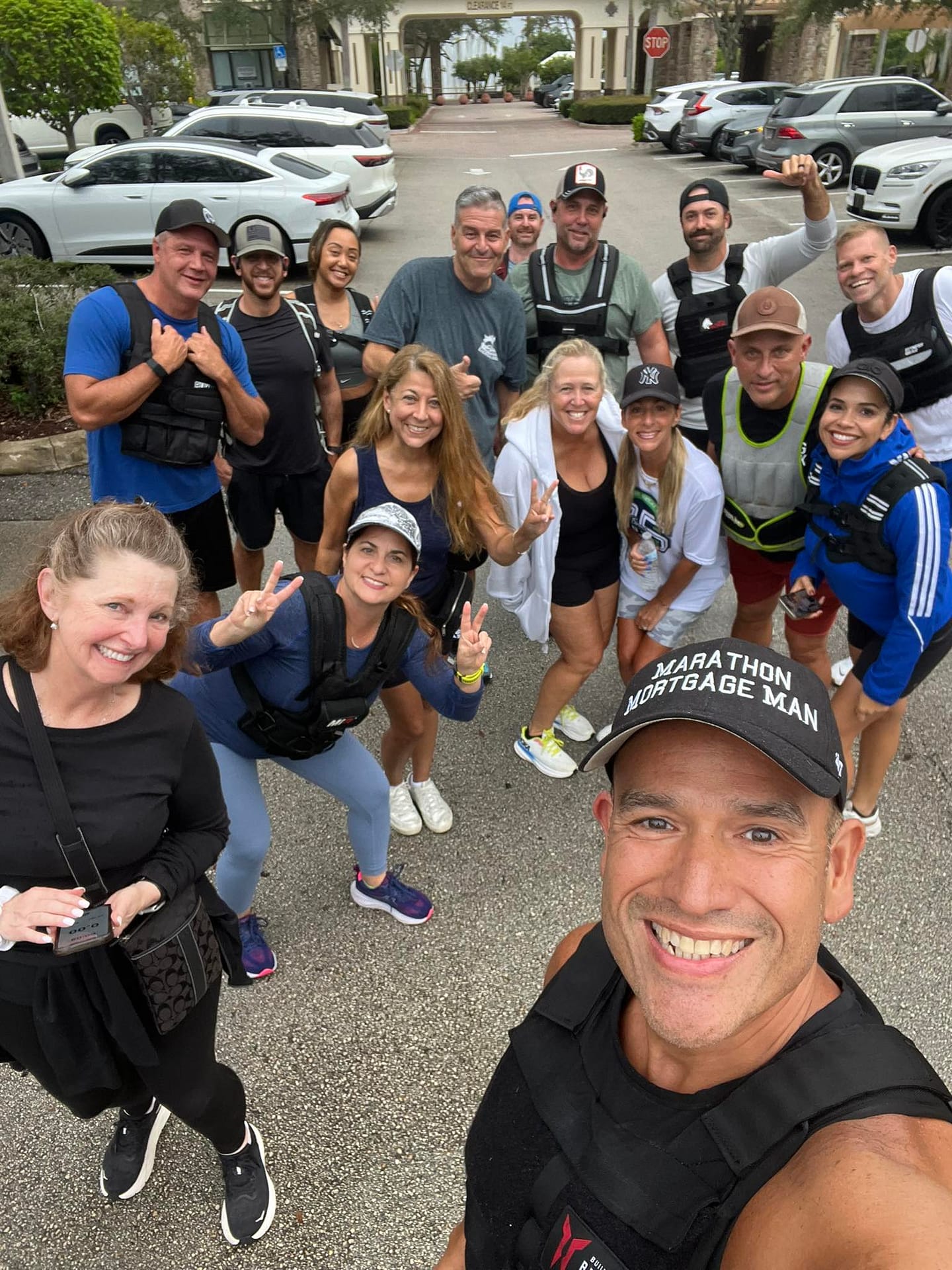Rucking with a Weighted Vest for Beginners

Rucking with a weighted vest adds purpose to an ordinary walk. It builds strength, endurance, and balance while keeping movement low-impact and easy to maintain. This simple form of weighted walking improves posture, activates key muscle groups, and supports long-term fitness with no gym required.
Discover the benefits of rucking with a weighted vest and learn how to choose the right weight for steady progress and lasting results.
Benefits of Rucking with a Weighted Vest
Builds Strength and Endurance
Added resistance helps develop leg, core, and back strength while improving cardiovascular stamina.
Joint-Friendly and Low Impact
Rucking challenges the body without the repetitive impact of running, making it a sustainable option for many walkers.
Improves Posture and Balance
A well-fitted vest distributes weight evenly across the torso, encouraging an upright posture and steady alignment.
Easy to Scale
Start light and adjust distance or weight gradually. The workout grows with your fitness level.
Social and Mental Benefits
Walk solo for calm or with a group for motivation and accountability. Community rucks help keep the habit consistent.
Note: This post shares general information for educational purposes. Check with your healthcare provider before making fitness changes.
How to Choose the Right Weight
The goal is to challenge your muscles, not overwhelm them. For beginners, start with a light vest in the 4-8 lb range or roughly 5-10% of your body weight. This amount provides noticeable resistance while keeping your stride natural and your joints comfortable.
As your endurance improves, you can gradually increase weight by 1-2 lbs at a time or move up to 10-12 lbs if you’re already active. The key is staying controlled and upright. If you start to feel shoulder pressure, knee strain, or notice your posture shifting, it’s time to lighten the load and focus on maintaining good form.
A snug, balanced fit makes all the difference. The weight should stay centered around your torso rather than pulling forward or bouncing as you walk.
Safety Tips for Beginners
Rucking is approachable, but form matters. Keep your strides short and natural. Engage your core and keep your shoulders relaxed but strong. A neutral spine helps prevent soreness after long walks.
Before and after your ruck, spend 5 minutes stretching your calves, quads, and shoulders. Hydrate well, especially if you’re walking outdoors in the heat.
While ankle and wrist weights can be a great tool for targeted strength or toning workouts, they’re not ideal for rucking. Because rucking involves longer walks with a consistent stride, weights on the extremities can change your natural gait and increase strain on joints over time.
For rucking, it’s best to keep the resistance centered through your core and lower body using a properly fitted weighted vest. Save ankle or wrist weights for shorter strength sessions, interval walks, or indoor workouts where movement is more controlled.
Sample Rucking Routine
Rucking can be added gradually into a regular walking schedule. The goal is steady progress, not speed or distance. Begin with light resistance and build at a pace that allows recovery between walks.
Weeks 1–2 | Get Comfortable
- Duration: 15–20 minutes
- Surface: Flat sidewalks or tracks
- Weight: 4–8 lbs (about 5–10% of body weight)
- Focus: Posture, breathing, and keeping steps even
Weeks 3–4 | Build Consistency
- Duration: 25–30 minutes
- Terrain: Add small inclines or gentle hills
- Maintain good form and shorten your stride if the load begins to feel heavy
Weeks 5 and Beyond | Increase Endurance
- Duration: 35–45 minutes
- Progression: Increase distance before adding more weight
- Frequency: Ruck 2–3 times per week, alternating with regular unweighted walks
A comfortable vest that fits close to the body helps maintain balance as distance increases.
Join a Rucking Community
Rucking doesn’t have to be a solo activity. Across the country, small community groups are forming to make walking with weighted vests more social, supportive, and fun. These gatherings often combine fitness with friendship—encouraging accountability, consistency, and connection outdoors.

The Rucking of Parkland began as a small local walking group in South Florida and has grown into a welcoming community for all fitness levels. Members meet regularly for group rucks, often combining conversation, mindfulness, and movement. It’s a reminder that rucking is about progress, not perfection, and that moving together makes the journey even better.

Maintaining Bone and Joint Health
Walking with added resistance isn’t just great for cardiovascular strength — it also supports long-term bone and joint health. The gentle impact of rucking encourages the body to build and maintain bone density, which becomes increasingly important with age.
Staying consistent with weighted walking can help improve balance, coordination, and stability — all factors that reduce the risk of falls and injury over time.
For additional insights on how weight-bearing activities like walking help strengthen bones, see Mayo Clinic’s guide to maintaining bone health .
The Takeaway
Rucking is one of the simplest, most effective ways to turn an ordinary walk into full-body training. By starting light, focusing on posture, and staying consistent, you’ll gain strength, endurance, and better balance without the intensity of traditional workouts.
Whether you’re walking solo or joining a local group like The Rucking of Parkland, this practice builds both body and community. Every step adds up, proving that meaningful progress doesn’t require a gym, just commitment and movement.

